The sounds of Aboriginal families in their encampments, horses and carriages, the strident voices of orators in Speakers Corner, Salvation Army hymns, revelling picnickers and the music of groups from around the world have carried through the spreading trees of Botanic Park.
Aboriginal attachment and use
The original inhabitants of the Adelaide Plains were the Kaurna people. Following the settlement of Adelaide by European colonists, much of the physical landscape was denuded. Remaining Kaurna people and hundreds of Aboriginal people from Encounter Bay, the Lower Lakes and the River Murray gathered in camps in the parklands, especially along the River Torrens in areas where water was available and the shelter of the trees that remained could be used.
From 1852 to 1861 the annual government distribution of rations and blankets to Aboriginal people on the Queen’s birthday, 24 May, occurred in the Police Paddocks, which became Botanic Park. German artist Eugène von Guérard sketched several camps when he visited the site in 1855.
Aboriginal people kept to their cultural practices as best they could. Children of the first headmaster of nearby St Peters College recalled: ‘In May [1855] the Aborigines camped in the parklands … and held corroborees which were clearly visible and audible from the upper windows of the school’ (Carroll & Tregenza, pp52–3).
On the very day he landed, 30 November 1849, Edward Snell observed a camp of 30 to 40 Aboriginal huts on the banks of the Torrens in Adelaide. He astutely observed corroborees, including one held near Hackney Bridge (then called the South Australian Company’s Bridge) on the Queen’s birthday in 1850: ‘There was a display of fireworks at the government house in the evening and the blacks had a corrobory at the Company’s mill’ (Griffiths, pp50, 112). In September 1850 newcomer Edward Day described a ‘“black village” of 20 huts formed of the light branches of the gum tree covered with leaves and grass’ on the banks of the river nearest to his residence about 200m northwest of the mill at Hackney (Register, 9 August 1926).
Tainmundilla
Kaurna people have sought in various ways to maintain their thousands of year’s connection to their land around Adelaide. The Adelaide City Council works closely with them to identify, preserve and protect areas of cultural significance. The Kaurna Naming Project involves the allocation of Kaurna names to sites.
Botanic Park is named Tainmuntilla, meaning ‘mistletoe place’. It is a newly constructed word in the Kaurna language, the original language of the Adelaide Plains, now being reclaimed. (Pronunciation tips – Tainmuntilla: ai is pronounced like i or eye or as in aisle; pronounce the u as in put; stress the first syllable.)
The early recorders of the Kaurna language, the young German missionaries Christian Gottlieb Teichelmann and Clamor Wilhelm Schürmann, defined tainmunda as ‘a parasitical plant on the red gum tree’. River Red Gums (Eucalyptus camaldulensis) were prolific in the area of Botanic Park. The fruit of tainmunda or mistletoe is edible.
Tainmunda was also the name of a Kaurna child who attended the school at Piltawodli.
The establishment of Botanic Park
Botanic Park was created when the Board of the Adelaide Botanic Garden purchased 34ha of the Police Paddock in 1866. The park’s boundaries were Frome Road (west), Hackney Road (east), the River Torrens (north) and the Botanic Garden (south). The development of the site, beginning in 1873–74, retained as many of the River Red Gums as possible.
Richard Schomburgk (director of Adelaide Botanic Garden, 1865–91) set out his vision for the Botanic Garden and Botanic Park in his annual report and plan of 1874. He saw the park as a complementary extension of the gardens: ‘The ground will be laid out in the character of a landscape garden and arboretum … flower beds and flower borders will be totally excluded’ (Aitken, p92). His emphasis was on the planting of a range of trees, including Australian natives, for study, display and preservation.
Schomburgk’s plan shows a central area for ‘horticultural exhibitions and music’, bisected by a promenade with an archery ground to the west. An avenue running from the centre to the Botanic Garden’s entrance was lined with trees. Southern areas of the park included two croquet lawns. An experimental area for fruit, vines, fodder plants and grasses was placed in the southeast corner. A further avenue of trees on the northern edge of the Botanic Garden also ran along Hackney Road. A curved carriage drive extended from Frome Road, over a bridge, to Hackney Road.
Although the spring and summer of 1873–74 were very hot and dry, Schomburgk was able to report a loss of only 3% of the 4000 young trees planted in the first year. His strategy of early planting and infrequent but deep watering provided an example of how plants could survive harsh conditions (Payne, p101).
By the end of 1877 more than 9000 trees had been planted. They included European and North American forest trees – ash, oak, birch, lime and pine, as well as selected Australian native trees. Lines of Moreton Bay Figs (Ficus macrophylla) led from Botanic Garden to the central park area. Plane trees (Platanus x acerifolia) edged the park. Conifers such as Aleppo pine (Pinus halepensis) and maritime or cluster pine (Pinus Pinaster) were planted near Hackney Road where the ground was stony. Well-placed seats then gave views of St Peter’s Cathedral and the Congregational Church, Brougham Place. The carriage drive was lined with two rows of trees, plane on the outside and an inside row native pyramid tree or Norfolk Island hibiscus (Lagunaria patersonii) alternating with bottle tree (Brachychiton populenus) (Payne, p102).
Schomburgk continued to press for additional funds to enable other elements of his plan to be realised. He argued that he could save costs by using his own staff rather than contractors. Botanic Park staff were also on a lower rate of pay to those working in Botanic Garden, and had to supply their own tools (Aitken, p90). However, it seems that the planned croquet and archery lawns never eventuated.
In August 1882 parliament determined that 2ha adjoining the River Torrens and Frome Road would be used for a zoological garden. While the Botanic Garden’s Board opposed the transfer, the relocation of caged display animals and birds from the Botanic Garden to the new zoo resulted in more space for plantings.
Soon Schomburgk could report that Botanic Park was assuming a mature air. Branches of the plane trees ‘overshadow the drive completely, so as to present a perfect tunnel of foliage’ (Aitken, p104). Entrance gates on Frome Road and Hackney Road were added, and in June 1884 Botanic Park and the carriage drive were officially opened.
Public access
Early official attitudes did not encourage use of the park by the general community. Regulations prohibited access to plantations. Enjoyment of the growing trees was largely via designated pathways and the carriage drive. Some people played and fished on the banks of First Creek in Botanic Park as it flowed to the River Torrens. Even so, the Register of 7 June 1890 reported:
The growing beauty of Botanic Park is also having its effect. The number of carriages and horsemen which passed through in 1889 was 18,750 of the former and 1,657 of the latter. This shows an increase of 4,390 vehicles and of 141 horsemen over the total recorded during the previous year.
The Salvation Army in Australia: 1880
In the centre of Botanic Park is a memorial stone to commemorate the location of the first successful Salvation Army meeting in Australia. On 5 September 1880 builder Edward Saunders and railway worker John Gore led the meeting from the back of a greengrocer’s cart. It was a time of economic depression, with nothing but charity and government rations for the large number of unemployed to rely on. Gore is reputed to have said, ‘If there’s a man here who hasn’t had a square meal today, let him come home to tea with me’.
This meeting followed an attempt by the two to preach in Light Square where they had been met with derision from the attending crowd. Saunders and Gore reported their success and the interest in forming a Salvation Army Corps in Adelaide to General William Booth in London. He despatched Captain and Mrs Sutherland to officiate, and they arrived on the SS Aconcagua in February 1881.
In 1980 the Salvation Army in Australia celebrated its centenary in Botanic Park.
New Australia: the 1893 farewell
Botanic Park has been the site of other significant events in South Australian and Australian history. One was the farewell to South Australian members of the New Australia Movement, who were leaving to create a utopian socialist colony in Paraguay.
The New Australia Co-operative Settlement Association, or New Australia Movement, was founded by William Lane in 1892. Lane was prominent in the Queensland labour movement and his ideals reflected assumptions of ‘white’ superiority dominant at the time. He aimed to build a society based on shared wealth, a ‘brotherhood of English-speaking Whites’, marriage for life, ‘preservation of the Colour-Line’, teetotalism and communism. The first contingent of hopeful settlers left Sydney for Paraguay in July 1893 on the Royal Tar.
Later that year a group of prospective colonists from South Australia were photographed at a farewell in Botanic Park. The Royal Tar, which sailed from Semaphore on 31 December, carried 19 South Australians among the 143 men, 16 women, 35 children and six infants on that journey. At the time, 3000 Australians were enrolled as supporters of the New Australia Movement. Some returned to Australia after disputes erupted in ‘New Australia’. Others stayed in Paraguay or settled in other South American countries. William Kyffin Birks from South Australia went on to become the chief of Buenos Ayres [sic] Pacific Railway.
Speakers Corner
Grass rings were set aside within Botanic Park for public speaking. From the 1890s in particular, these attracted large audiences on a Sunday afternoon. The ring near Frome Road, Speakers Corner, remained an important element of Botanic Park life until the 1970s. Noel Lothian (director of Adelaide Botanic Garden 1948–80) recalled that prospective Labor politicians ‘had to prove their worth down there’ (Aitken, p169).
Organisations wishing to speak in the park had to apply to the Botanic Garden’s Board for a permit. Each speaker had to be named and approved. Increasingly, police reports were called for before approval was granted, although permits were rarely refused. A failure to renew the permit of IWW (Industrial Workers of the World) speakers on one occasion led to arrests when members spoke regardless. Protests were organised in their support and they later regained the right to be heard. IWW speakers during the Great Depression included Aboriginal orator Ted O’Reilly.
Organisations and individuals using this public forum were diverse. Members of religious groups were predominantly of an evangelical persuasion. They included temperance societies and the Rosary Crusade. Trade unions regularly held meetings of members in the Park, particularly transport and building unions associated with workplaces nearby. Political groups fielding speakers included the Labor Party, the Communist Party, the Socialist Party and the Democratic Labor Party. Pro and anti-conscription speakers raised their voices during the First World War. Other groups reflected issues current at particular times and minority perspectives not otherwise heard. Such groups included the Labor Regulation League, the Central Council of the Unemployed, the Single Tax Society, the Rationalist Association, the Australian Pensioners League and the Consumer Protection Committee.
Speakers Corner no longer attracts audiences. The three rows of wooden seats in the ring near Frome Road are now mainly used by picnickers and during WOMADelaide.
Changing attitudes to public use
Maurice Holtze assumed the directorship of Adelaide Botanic Garden and Botanic Park in 1891 following the death of Schomburgk. Holtze brought a very different approach to park management. He began by improving the working conditions of staff. He then recommended the relaxation and amendment of by-laws to make the park more accessible to the general public. Board members were reluctant to agree, viewing Holtze as ‘a democrat of the deepest dye’. Their support was obtained through the intervention of chairman Sir Henry Ayers (Aitken, p115).
This new approach allowed people to sit on the lawns, enjoy picnics and use perambulators. Barbed wire was removed from the sides of walks and drives. The extension of the water supply to Botanic Park in 1894 provided drinking water to visitors. In 1905 tennis courts were built as both a public facility and a revenue-raising initiative.
In 1907 the 50th anniversary of Adelaide Botanic Garden was celebrated there and in the park. On the evening of 19 October a ‘continental’ was held during which the Locomotive Band played from the newly fenced tennis courts. 25 000 residents visited the gardens and the park on the day.
Rejuvenation and today’s Botanic Park
By the mid twentieth century Botanic Park looked a little overgrown and tired. Director Noel Lothian instituted a thinning of trees as part of staged plan to revitalise the area. Bulldozers borrowed from the Engineering and Water Supply Department knocked down and carted away trees that Lothian assessed as dead, diseased or overcrowded. Remedial work continued into the early 1970s with the removal of alternate pairs of trees from Plane Tree Drive.
Lothian’s plans for rejuvenation were maintained by his successor, Brian Morley (1981–2000), who aimed to reinstate Botanic Park as an extension of the Botanic Garden’s arboretum.
At the same time, the park has blossomed as a place for informal family gatherings and as a venue for public events. Moonlight Cinema plays during summer months. The Tasting Australia festival showcased South Australian produce and cooking. Parklife concerts have attracted young people in particular. WOMADelaide remains the paramount festival of world music in Australia. Through these events, and its proximity to the Zoological Garden, Botanic Park has been enjoyed by many thousands of Adelaidians as well as visitors from the suburbs, country, interstate and overseas.


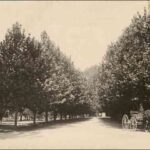


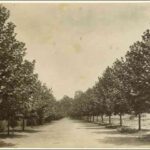
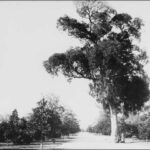
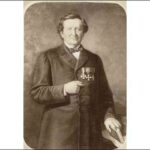
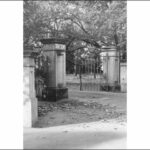
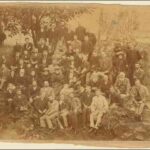
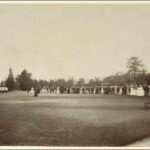
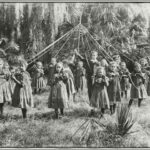
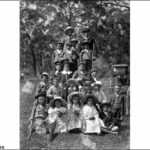

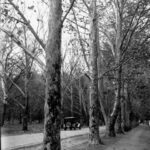
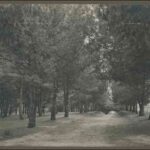
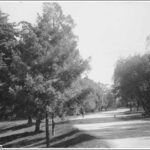
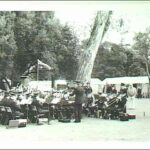
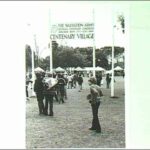
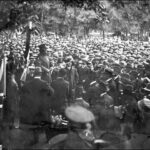
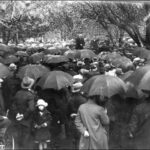
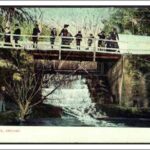
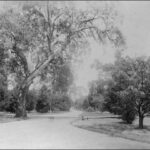
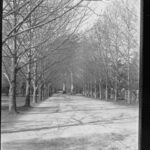


Comments